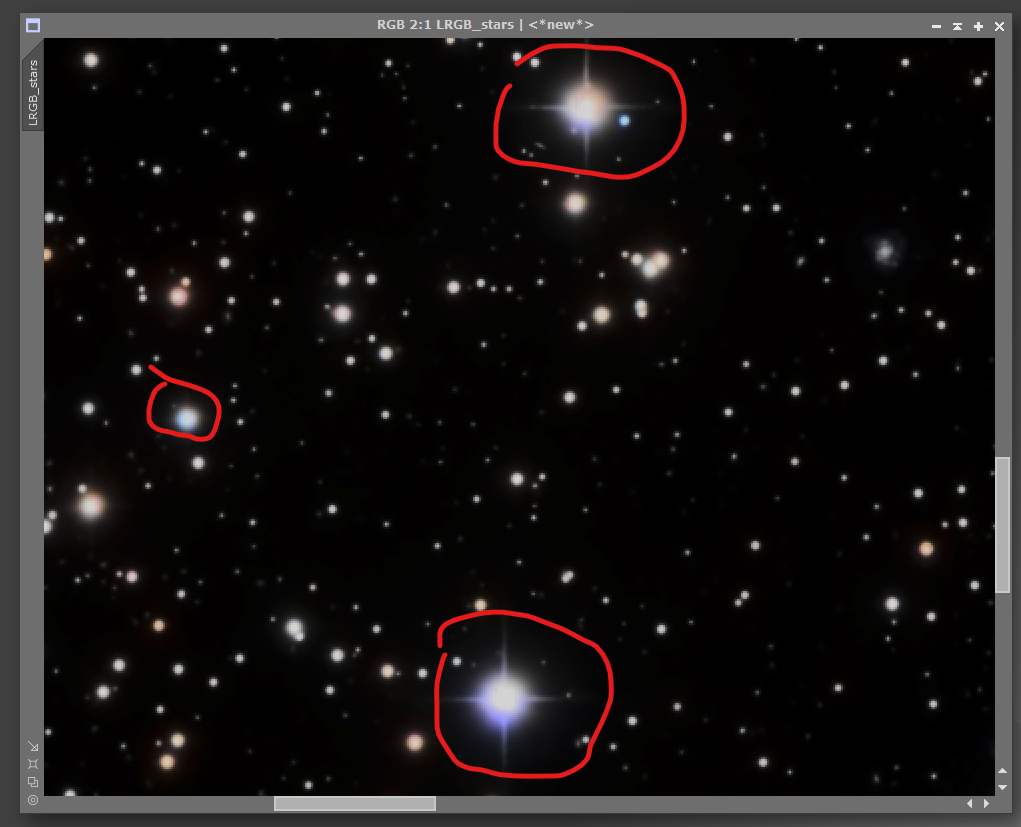Hi! I am coming to you for your support, my problem is the following: I am not happy with my blue stars, the yellow and red ones come out perfect but the blue ones are not. As you can see in the image, they come out as two colors and when I want to highlight the color I can't get the blue color to be uniform throughout the star. My equipment is: William Optics FLT91, WO 68III Flattener, Atik 414 EX Mono Camera, ZWO Filters and Wheel. Generally the exposure time I use for the RGB channels is 300 seconds under a Bortle 2 sky and between 1 and 2 hours of integration per channel. Should I drastically reduce the exposure time? Is there a defect in my tube or filters? I process them in PI and use the most up-to-date tools available. I notice that since I combined my RGB channels, the resulting image already shows signs that my blue stars are wrong. I would greatly appreciate any suggestions please. Thank you and clear skies!

